Tired of overspending and losing track of your money each month? One of the top benefits of a debit card is that it helps you spend only what you have in your checking account, helping to prevent overdraft fees.
In this article, you’ll learn how debit cards offer helpful perks like fraud protection, budgeting ease, and everyday convenience. Read on for 10 reasons why using a debit card can make managing your money easier.
Key Takeaways
Your debit card connects straight to your checking account, making spending simple—so you can easily watch your balance and stay within budget.
Built-in safety tools, like PIN codes and EMV chips, protect your account from fraud; every time you buy something, the chip creates a one-time security code, keeping your details secure.
You can use debit almost anywhere—stores, restaurants, online shops—and even link your card to digital payment apps like Apple Pay, letting you shop without carrying cash.
Unlike credit cards, debit cards don’t rack up interest charges; plus, many banks don’t charge annual fees either, saving you money in the long run.
If your debit card goes missing, just open your banking app, freeze it instantly, and your bank will send out a replacement card within roughly 3-5 business days.
Table of Contents
Direct Access to Your Money

Your debit card connects directly to your checking account, giving you immediate access to your money—no bank visits, no waiting for checks to clear. With the funds right there, you can easily buy groceries, pay household bills, or shop online anytime.
A debit card helps plenty of women manage their money better, because you only spend what’s actually available in your account.
I personally love the convenience of having my debit card available wherever I go. Last year I visited Mexico, and my tarjeta de débito (that’s debit card in Spanish) handled all my expenses—from cozy hotel rooms to delicious street tacos.
The EMV chip and secure PIN protection kept my account secure, and with the mobile banking app, I tracked every purchase as it happened. No unexpected charges appeared on my bank statement later!
A debit card puts you in control – it’s your money, on your terms, right when you need it.
Encourages Budget Management

Debit cards make managing your budget clear and easy. Each time you buy something, the transaction shows up instantly in your checking account. Banks often group expenses into useful categories—like groceries, fuel, or shopping.
This feature helps identify exactly where cash is spent each month. Some debit cards even link to handy mobile apps, alerting you whenever you’re overspending in certain areas.
Automatic bill pay through a debit card saves valuable time and reduces costly late fees. Since the money pulls directly from your checking account, there’s no interest—unlike with credit cards.
Many parents like debit cards as tools to teach their kids good money habits. Kids quickly learn to check their balance before buying stuff, picking up responsible spending skills at a young age.
Seeing actual cash disappear right after a purchase builds lasting financial discipline.
Fraud Protection Features
Modern debit cards come with strong fraud protection tools like PIN codes and EMV chips that shield your money from thieves – read on to learn how these features keep your cash safe in today’s digital world.
PIN security
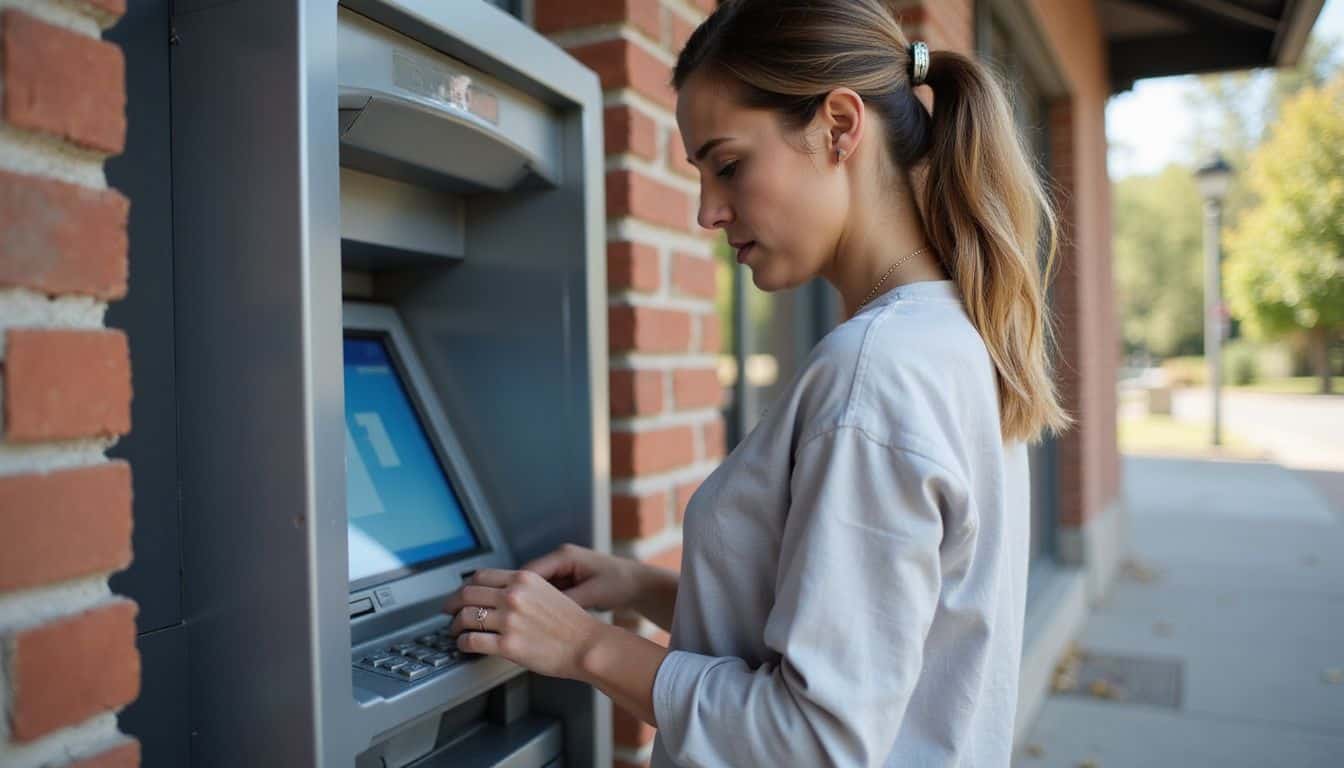
Your debit card’s PIN acts like a personal security guard for your money. This private identification number prevents strangers from using your card if you lose it or someone steals it.
Last year, I misplaced my wallet, but luckily, without the PIN, the person who found it couldn’t access any money. Most banks ask you to choose a four-digit number, which you type into ATMs and payment terminals.
Just entering these few digits makes carrying a debit card safer than using cash.
A strong PIN is your first line of defense against unauthorized access to your checking account.
EMV chip technology teams up with your PIN to add extra protection for your card. The chip makes it difficult for thieves to duplicate your card at checkout registers. I’ve noticed lately that my card stays inside the reader a little longer—this delay is because the chip creates a unique transaction code every time.
Extra safety matters because debit cards connect directly to your checking account, unlike credit cards that give you additional protection.
EMV chip technology
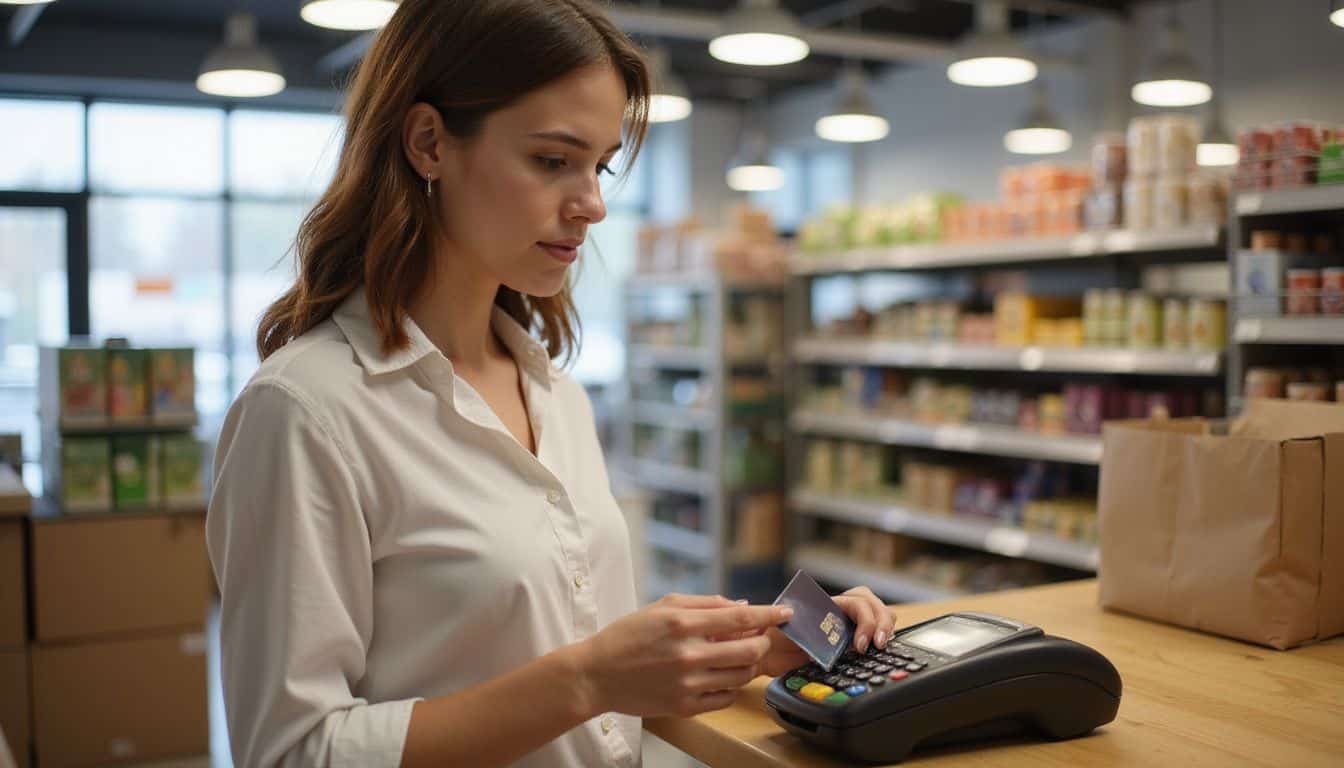
That small metal square on debit cards offers amazing protection. Each time you buy something, EMV chip technology generates a fresh, unique code. Magnetic stripes, on the other hand, used the exact same information every single time.
With this clever update, thieves have a tough time making copies or creating fake cards for stores. Last year, I switched to a card with a chip—now when shopping, it stays in the reader slightly longer, but shopping feels much safer.
Most banks today provide debit cards that automatically include this chip to fight fraud.
Many women value this extra layer of security attached to their checking accounts. At the checkout counter, the chip combines with your PIN to guard your cash during card transactions.
While the card sits in the payment machine, encrypted signals rush back and forth between the chip and payment system, securely protecting your personal details and account number.
Thanks to this technology, fraud at gas stations and stores around the U.S. has dropped significantly.
Convenience for Everyday Transactions

Debit cards simplify your everyday purchases. Just swipe or tap your card at grocery stores, restaurants, or gas stations—no cash needed. Most stores accepting credit cards gladly welcome debit cards too, giving you ample payment choices.
Plus, your card easily pairs with digital wallets like Apple Pay and Google Pay, letting you pay straight from your phone.
Debit cards also let you pull cash directly from ATMs whenever you need it. Even better, several retailers offer cash back right at the checkout counter, saving you the hassle—and expense—of using at-fee ATMs.
You can skip the extra trip to the bank, saving both your time and money. With every payment, your checking balance instantly adjusts, so you’ll always see exactly what you have left.
Cost-Effectiveness
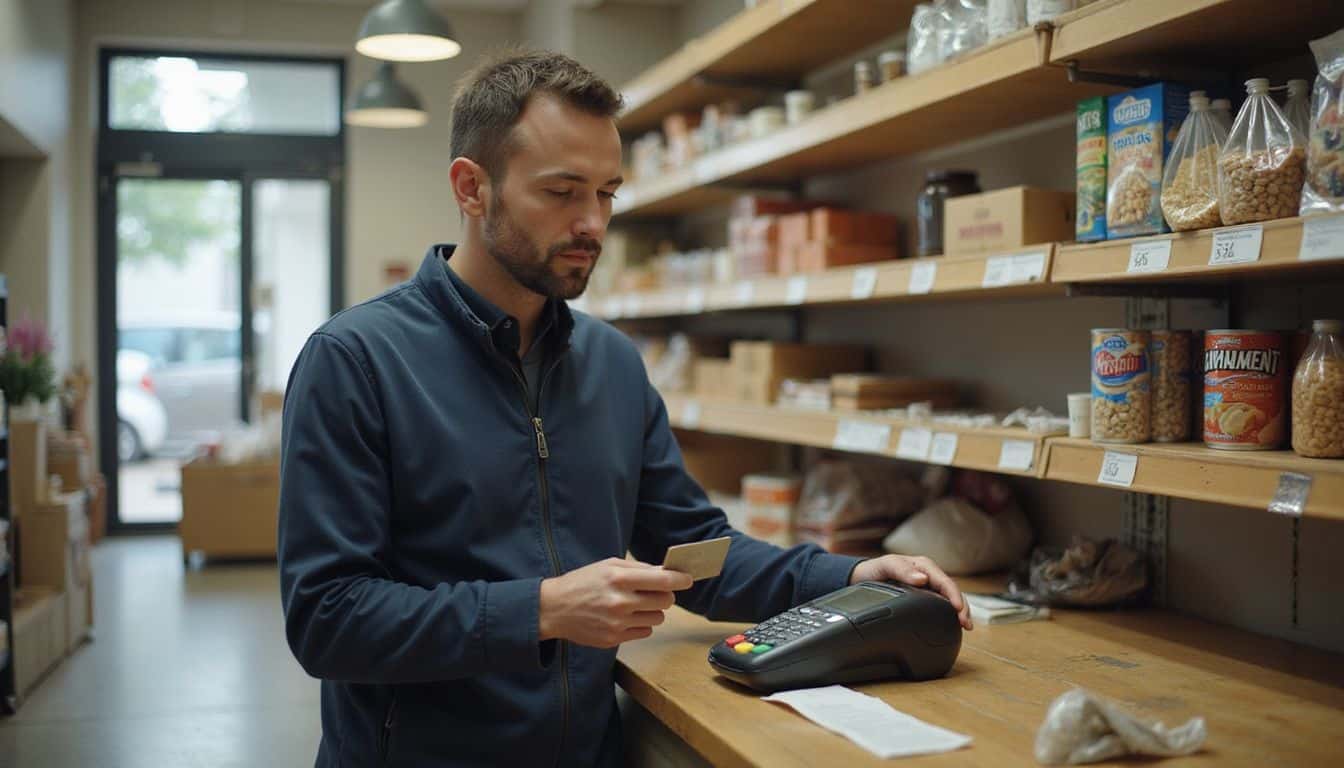
Using a debit card can be a handy option to save money every day. Since payments come directly from your checking account, you’ll never rack up interest charges—unlike a credit card that adds costly fees if you don’t clear the balance each month.
Plus, most banks give you these cards without charging yearly fees, perfect for your regular spending. The neat thing is, every transaction shows up clearly on your bank statement.
This makes it easy to track spending and see exactly where your money’s disappearing.
But the perks go beyond just saving on interest. Many stores now give you the option to get cash back right at the checkout, letting you skip ATM withdrawals and their annoying fees.
Setting up automatic bill payments through your debit card also means fewer late charges on services like utilities or subscription plans. This simple payment method creates good financial habits and helps you keep more cash for yourself.
Widely Accepted for Payments

Debit cards are accepted pretty much anywhere you see credit cards. I regularly use mine at local boutiques, big-box retailers, and online shops without any trouble. Most businesses happily accept Visa and Mastercard debit options at checkout.
Your debit card can also pair smoothly with digital wallets like Apple Pay and Google Pay—saving you time paying at the register. This broad acceptance lets you buy groceries, get gas, or snag that adorable dress online—even without cash.
Just keep an eye out for pre-authorization holds. Certain places, such as hotels or gas pumps, sometimes temporarily freeze extra money in your checking account. These temporary holds can reduce how much money is available in your account for a few days.
On a brighter note, many debit cards offer cashback programs—giving you rewards without overspending. If you’re unsure about choosing between credit and debit, check out this helpful guide on debit vs credit for making smart financial choices.
Now, let’s chat about how your debit card can conveniently get you cash whenever needed.
Easy Replacement if Lost or Stolen

Can’t find your debit card? Stay calm—it happens! Luckily, banks have made getting a new one quick and painless. First off, notify your bank immediately once you realize the card is missing.
Most banks let you freeze your card instantly through their mobile apps, blocking thieves from making purchases or withdrawing cash.
Banks understand you’re stressed, and they’re ready to help. Many will even offer emergency cash access to tide you over until your replacement arrives. Usually, banks mail out new cards within 3-5 business days, though a few even provide speedy delivery if you’re in an urgent situation.
Your replacement card links directly to your existing checking account. Your automatic payments and direct deposits will stay the same—no extra hassle or worry on your end.
Helps Build Financial Discipline

Debit cards are excellent for managing your money smoothly. They link straight to your checking account, so you only spend what’s already there. That built-in limit helps you avoid overspending and keeps your budget steady.
Lots of women discover that using debit instead of credit makes it easier to follow spending plans and avoid debt problems.
Your debit card leaves clear digital footprints, making spending easy to track. Every purchase quickly shows up in your mobile banking app or online statement. You’ll instantly see where your dollars went, helping you spot habits in your spending.
With a clearer view of your finances, trimming unnecessary expenses is simpler—freeing more cash for savings, urgent needs, or plans down the line.
Secure Access to Cash at ATMs
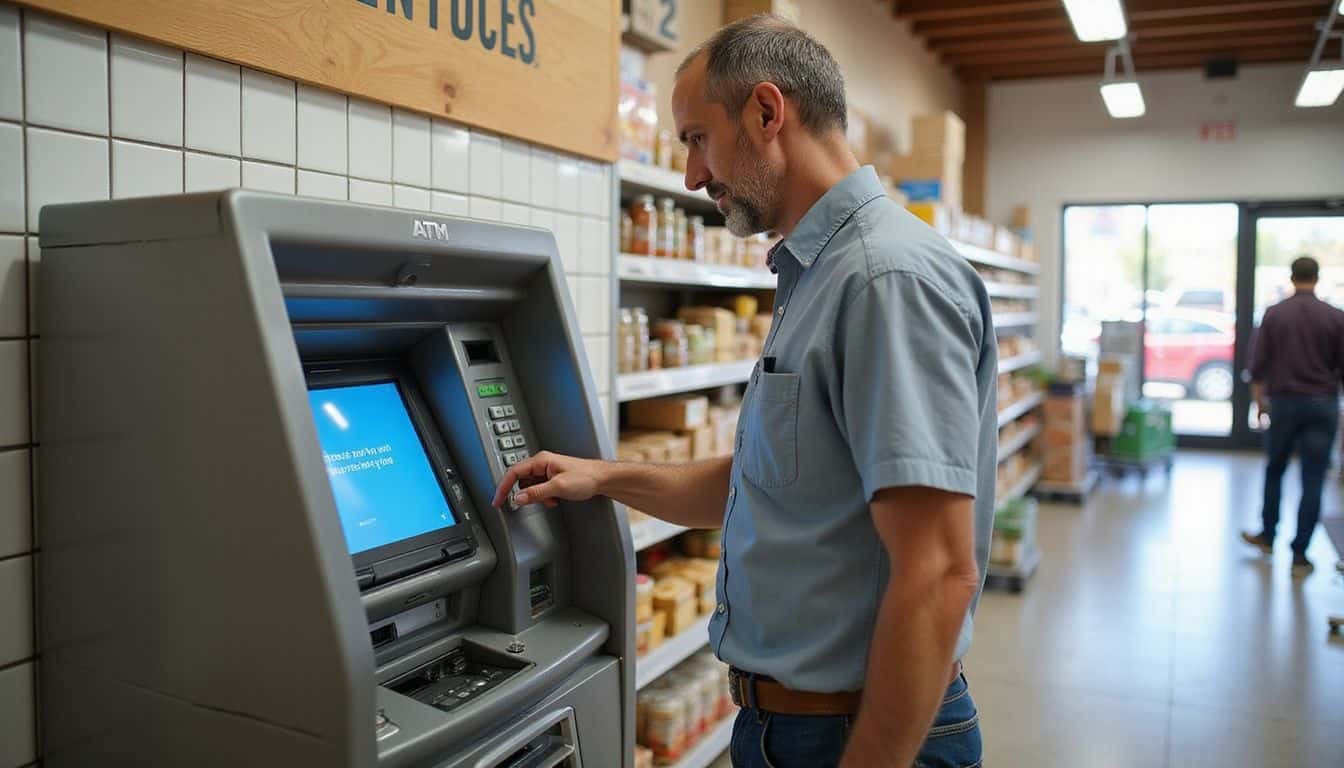
Your debit card lets you tap into your money anytime, day or night, at thousands of ATMs across the country. No more rushing to the bank or standing in endless lines—just slide your card, punch in your PIN, and grab your cash in moments.
Most banks allow free ATM withdrawals through their own machines, which helps you avoid extra charges. Having such wide ATM access is handy while running errands, going on trips, or handling sudden emergencies.
Here’s a handy tip: lots of stores offer cash-back options right at the checkout counter when paying with debit. Using this option, you skip ATM charges completely. Your card uses secure chip technology along with a unique personal identification number, keeping your account safe.
These built-in protections guard your checking account from unwanted access, letting you breathe easy each time you withdraw money.
How Will Debit Card Usage Evolve in 2025?

Debit cards will look pretty different by 2025. Digital banking services are quickly rising alongside debit card use, helping busy women manage their money better. Banks are rolling out special accounts geared to younger people who like mobile apps and tap-to-pay features.
Even I hardly pull out my physical debit card anymore—it’s almost always my phone that does the paying. This trend lines up well with predictions from JP Morgan Chase and other big banks, which see electronic payments becoming the norm.
Banks are also really stepping up their financial literacy efforts, investing in programs that teach smart debit card practices. Local community banks plan to host workshops about managing account balances and skipping ATM fees.
The Federal Reserve notes that women typically handle family finances, making them an important group for these teaching initiatives. Stores will boost their point-of-sale systems too—with more cashback features and lower transaction costs—to better compete with credit card reward offers.
People Also Ask
What are the main advantages of paying with a debit card instead of using cash?
Debit cards protect you from fraud—something cash simply cannot do. You can easily buy items online or swipe at checkout, all without carrying physical bills. Many banks also offer perks like cashback deals or discounts, just for paying with your debit card.
Will using a debit card change my credit score?
Nope, debit card activity doesn’t affect your credit at all. That’s because debit purchases pull directly from your checking account. A good credit rating builds from paying off loans and credit card balances—not from your checking account transactions.
Can I earn rewards just by using my debit card?
Definitely! Nowadays, banks provide all kinds of reward programs for debit users. You might snag cash back on groceries, earn points toward gift cards, or receive store discounts. Check directly with your bank to see what perks they offer for your debit spending.
Are there any debit card fees I should know about?
Sometimes banks charge extra fees if you withdraw money from ATMs outside their network, or for certain cash transactions. Another fee to watch is overdraft charges, which happen if you spend more than what’s in your account. Banks like JPMorgan Chase Bank, N.A. and PNC Bank often have checking account options with low or zero extra fees.
Is online shopping safe when using my debit card?
Debit cards usually have effective fraud protection built right in. Banks frequently keep an eye on your account for odd activity, alerting you whenever something unusual pops up. Still, credit cards often come with even stronger safeguards, making them a safer choice for higher-value items bought online.
What’s the real difference between a debit card and credit card?
Debit cards instantly take money out of your checking account, while credit cards let you borrow money that you’ll pay back later. With a credit card, interest can pile up if you don’t pay your whole bill on time—something debit cards never do. Credit cards build your credit score, but debit cards help you stay debt-free.
References
https://www.chase.com/personal/banking/education/basics/benefits-of-debit-cards
https://mygsb.bank/news/10-essential-personal-debit-card-benefits-for-young-families/ (2024-04-19)
https://www.google.com/160+%20comments%20%20·%20%201%20year%20ago
https://www.datavisor.com/Wiki
https://www.google.com/2%20answers%20%20·%20%208%20years%20ago
https://www.sccu.com/Articles/Personal%20Finance
https://www.fscb.com/blog/top-benefits-of-using-a-debit-card
https://www.gatecity.bank/education/articles/debit-card-benefits/
https://www.supermoney.com/advantages-of-debit-card (2024-03-15)
https://n26.com/en-eu/blog/lost-debit-card (2024-06-17)
https://www.nerdwallet.com/Banking
